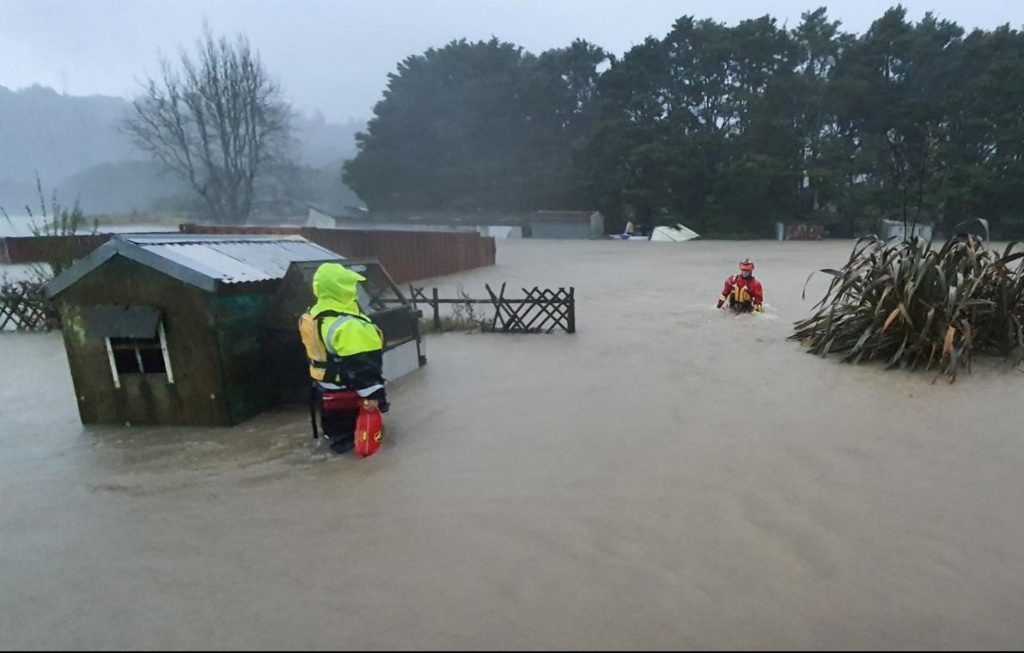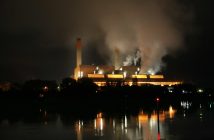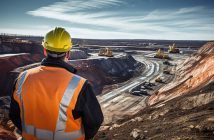Auckland has recorded more than 769% of its rainfall in a normal January, but is this something we should have seen coming?

As we warm the climate, we constantly weight the dice towards heavier rainfall events, Victoria University of Wellington Professor James Renwick explains.
“Many of the heaviest rainfall events in New Zealand and elsewhere are associated with ‘atmospheric rivers’: vast corridors of moisture that extend from the tropics to higher latitudes. The recent flooding in Auckland is an example of this.
“As the atmosphere becomes more loaded with water vapour, these ‘rivers’ are set to transport more moisture.
“Already, a significant atmospheric river carries as much water as the Amazon does, around 350 times the flow in the Clutha or over 600 times the flow in the Waikato.
“The latest IPCC report states that ‘there is high confidence that the magnitude and duration of atmospheric rivers are projected to increase in future, leading to increased precipitation.’
“Exactly how much increase we’ll see depends on how much more greenhouse gas is emitted into the global atmosphere. If emissions reduce according to the Paris Agreement and global warming is limited to less than 2°C, we may see an overall increase in atmospheric moisture of 10% or so.
“When concentrated into a storm, an atmospheric river, or a thunderstorm, that could easily translate to 20-30% or more rainfall than would have occurred without the warming.
“The flooding event in Auckland will be studied closely no doubt, to determine just how rare an event it was, and how much of an influence climate change played in its intensity.
“We need to remember there was also an influence from ‘natural variability’ in the form of a La Niña and the associated warmer seas around New Zealand and the western Pacific, plus the influence of a ‘Madden-Julian event’ passing our longitudes in the tropics.
“By researching this event, we can better understand the role of different components of the climate system on extreme rainfalls in New Zealand and how they are changing, something we still have plenty to learn about.”
Victoria University of Wellington Professor Ilan Noy argues that while the deluge was unprecedented, we should not conclude from that the catastrophe was inevitable.
“This flood highlights two issues for me as an economist: The first is that we need to invest more in infrastructure that will enable us to be better prepared for what a changing climate is likely to throw at us. In many places, our public infrastructure has been neglected for too long.
“And second, that in some locations, new defensive infrastructure may not be enough (or might be too costly). In those cases, we need to relocate some households and communities out of harms way.
“Together, we need to develop the mechanisms to be able to do both these things, and to decide when each one might be more appropriate.
“Doing nothing, however, should no longer be considered a viable option for dealing with the increased risk of flooding in many locations across Aotearoa.”
Indeed, former Auckland Councillor Cameron Brewer says Auckland Council has been too permissive with consents, allowing too many developers to sub-divide and build in flood prone areas.
“Last decade some Special Housing Areas were built in pretty marginal places, but it seems to have got worse since the 2016 Auckland Unitary Plan and the latest residential building boom.
“We were all promised the Unitary Plan was more about going up than out, but in the past few years it has been mostly ‘greenfields’ development on the outskirts of Auckland, and some of it in totally unsuitable locations.
“We got rid of the Auckland Regional Council in 2010 because many thought they were too litigious and a drag on development. Much of their work and warnings, however, are now being borne out.
“In 2009 the regional council published some amazing fine-tooth mapping of the entire region identifying rapid flood hazard areas. Alarmingly in the intervening years, some well identified risk areas have been built on and in this latest event many sadly endured flash flooding.
“In the rush to get into the housing market, many Aucklanders have had little choice but to buy or rent properties in flood plains and rapid flood hazard areas. Developers have also headed to very problematic flood basins, with too many getting their way.
“With the heat coming of the residential market and building boom, now’s the time for Auckland Council to take stock. We can’t just hide behind ‘buyer beware’ because many buyers and tenants will take the risk just to secure a house.
“Auckland Council now has to accept that many sites around Auckland are just not suitable to future development, with all the maps, facts and anecdotes there to back them up.”








